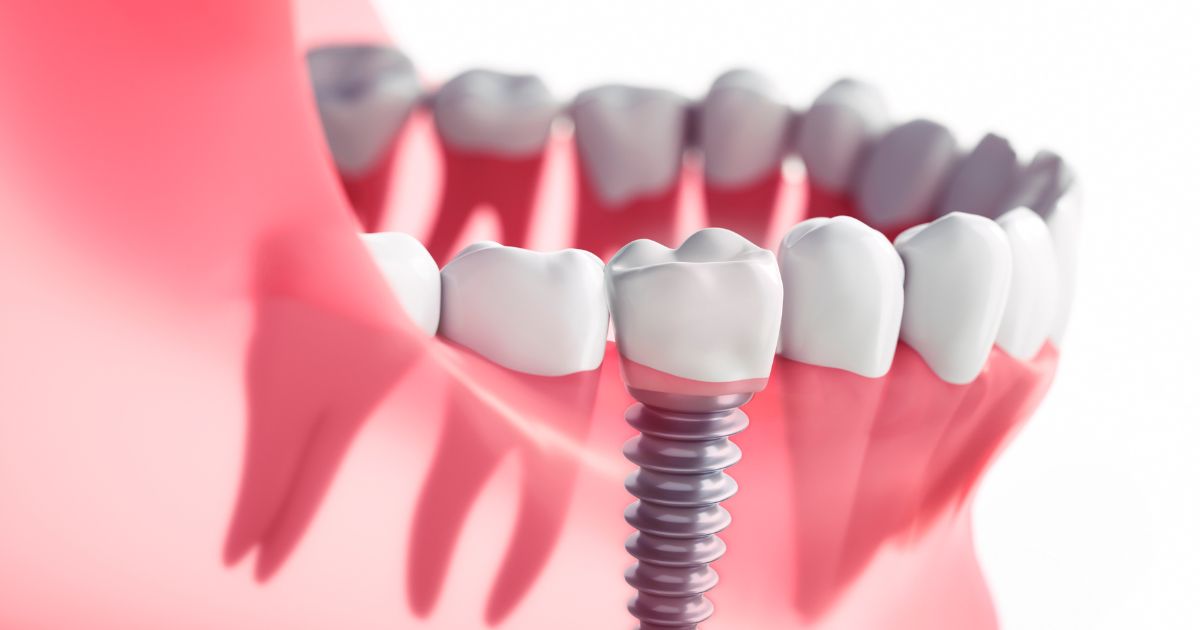Patients with insufficient jawbone may require bone grafts in order to build enough foundation to attach dental implants that anchor in the jawbone in the same manner as natural teeth. Dental implants serve as an artificial root to secure prosthetic teeth and fuse with the jawbone for maximum stability.
When teeth are missing, the bone deteriorates and reduces the density, height, and width of the surrounding jawbone. When this occurs, oral surgeons are not able to install implants into the natural jawbone without first replacing it with bone grafts.
What Is Bone Grafting?
Bone grafting is a surgical procedure that uses transplanted bone material in or around existing jawbone to build up new bone and a sturdier foundation for attaching and securing dental implants. Your oral surgeon will make a small incision in the gum to expose the existing bone in order to attach grafting material. Once placed, the body will absorb and replace the new bone over time, strengthening and building up the jawbone.
Transplanted bone can be obtained from various sources, including your own body, animal, and human donors, or synthetically, all of which are processed to make them sterile, disease free, and safe. Typically, grafting material comes in many forms, such as putty, powder, granules, or gels that can be injected by a syringe.
Are There Different Types of Bone Grafts?
There are four different types of bone grafts, as well as materials used to anchor the dental implants, which vary depending on the patient’s needs. Types of bone graft transplantation include:
- Ridge augmentation: Patients who have teeth missing for long periods of time often have significant thinning of the jawbone as a result. Ridge augmentation grafts are used to increase the size and thickness of the jawbone to provide a more stable foundation for dental implants.
- Socket preservation: This type of bone graft is transplanted into the socket of an extracted tooth at the time of extraction to fill the void and prevent collapse of the socket’s sides.
- Sinus lift: If the patient is missing upper back teeth, the sinuses often drop into the former root spaces. Implants often cannot be placed in these circumstances, as they can puncture the sinuses. A lift is performed to return them to their proper position, and a bone graft transplanted underneath to hold them in place and create a foundation for implants.
- Periodontal graft: Gum disease creates infection that can break down the bone over time and loosens the teeth. To fix this problem, a periodontal bone graft is created around an existing, healthy tooth to provide support and prevent movement.
Bone may be removed from another part of the patient’s jaw or body or another source for transplanting and must heal before dental implants can be placed, which often requires multiple surgeries and procedures to complete. Following surgery, you may experience swelling in your gums or skin, pain, bruising, and minor bleeding.
Bone graft healing often takes many months to achieve the ideal foundation to install implants. There are occasionally patients able to have bone grafts and dental implants installed simultaneously, but this is rare. Each patient’s needs vary, and procedures are determined on a case-by-case basis.
South Jersey Oral Surgeons at Lanzi Burke Oral & Maxillofacial Surgeons Can Perform Your Dental Implant Surgery
Bone grafting and dental implant surgeries are extensive and multi-stage procedures. Speak with one of our skilled South Jersey oral surgeons at Lanzi Burke Oral & Maxillofacial Surgeons to learn more. Call us at 856-582-4222 or contact us online to schedule a consultation today. Located in Washington Township, Haddonfield, and Woolwich Township, New Jersey, we are dedicated to helping patients throughout South Jersey.


